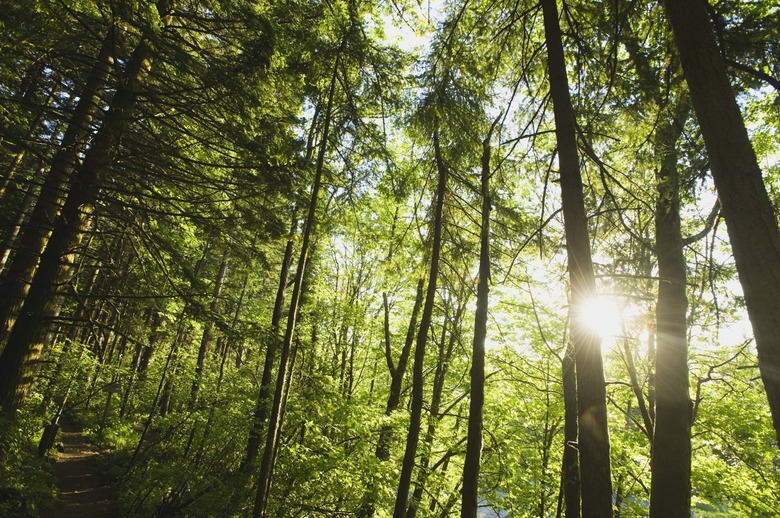A List Of Natural Resources For Kids
Natural resources from the Earth fall into three classifications: renewable, non-renewable and flow resources. Air, water, soil, metals and minerals are all natural resources. So are Earth's energy resources, which include fossil fuels, geothermal, tidal, wind and solar energy, and biological resources such as plants, trees and animals.
Renewable, Non-Renewable and Flow Resources
Scientists consider plants, trees and animals, water and soil as renewable resources because they replenish themselves. If renewable resources are not killed off, over-harvested or polluted, they continue to regenerate. Non-renewable resources define reserves that cannot be replaced after they are used up. This includes coal, petroleum and fossil fuels that are used to produce energy, plastic products and gasoline. Wind, solar power and the tides are renewable flow resources that do not require regeneration or reproduction.
Water, Soil and Air
Humans cannot live without air, water and soil to grow foods. Water nourishes and supports humans, and plant and animal life need water to grow and thrive. Soil provides support and needed nutrients, as well as heat, water and oxygen to natural ecosystems all over the Earth such as forests, grasslands and deserts. These areas support life in all its forms.
Biological Natural Resources
Biological resources are living creatures of all kinds. They include trees, plants, animals, fish and even microbes. Humans use trees, a renewable resource, to build structures and objects from wood. Plants supply food, and animals and fish provide food, work and companionship. Some microbes, microscopic creatures and bacteria are used to naturally ferment foods and drinks when making sauerkraut, cheese or root beer.
Raw Materials From the Earth
Inside the Earth, miners dig for minerals of all kinds such as gold and nickel. Manufacturers use raw materials to make products. For example, the fiberglass in homes is made from soda ash, boron, silicon and other products. When placed inside the walls of a home, insulation helps keep the home warm or cool depending on the season or outside weather.
Protecting Earth’s Natural Resources
Local, state and national governments all over the world have created laws to protect and preserve our natural resources so humans and future generations continue to thrive. This includes setting aside special park areas and land preserves for animals, making laws against littering and pollution, and creating tax credits for people who use renewable energy such as wind and solar.
Cite This Article
MLA
Brenner, Laurie. "A List Of Natural Resources For Kids" sciencing.com, https://www.sciencing.com/list-natural-resources-kids-7260602/. 13 March 2018.
APA
Brenner, Laurie. (2018, March 13). A List Of Natural Resources For Kids. sciencing.com. Retrieved from https://www.sciencing.com/list-natural-resources-kids-7260602/
Chicago
Brenner, Laurie. A List Of Natural Resources For Kids last modified March 24, 2022. https://www.sciencing.com/list-natural-resources-kids-7260602/
